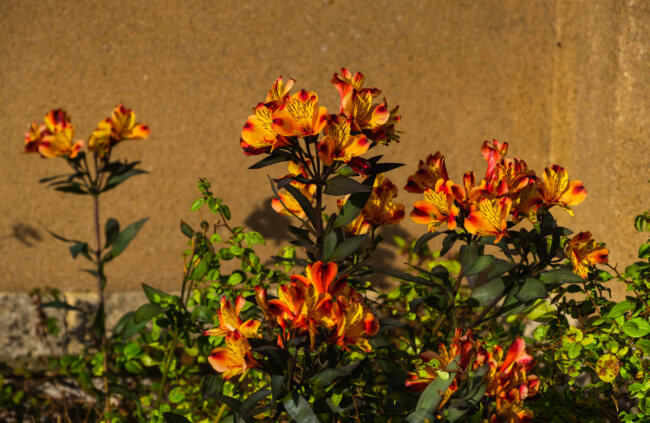Commonly known as the Peruvian lily or lily of the Incas, Alstroemeria hails from South America and were brought to Europe in the 18th century. It’s quite an interesting fact they were as these flowers really only grow well in warm climates.
In cooler climates, they need to be grown in pots. However, they can be grown in humid greenhouses and if you’re only after their cut flower this might be a great alternative.
Stemming from tuberous roots, the Alstroemeria lily is an exceptionally tall plant reaching between 70 cm – 1 m (28 - 40 in). If that’s too tall for your garden then Alstroemeria ‘Peruvian Princess’, a dwarfing variety, will eclipse at 40 cm high.
More...

How to Grow Alstroemeria in Australia
Perfect Conditions for Planting Alstroemeria
There really isn’t such a beast available but alstroemerias do prefer a well-drained soil that is slightly acidic. They will tolerate part-shade in warmer climates yet would rather the warmth of a nice spot in full-sun.
Mulching these lily’s roots in the heat of summer will aid in flower preservation but it’s not essential for the tubers' development.

Pests and Disease that Love Peruvian Lily
This plant is relatively free from pests and diseases. Unless, of course, you’re growing them inside a greenhouse where they seem to become magnets for infestations. Glasshouse whitefly is one such predator.
Mosaic virus is another nasty that terrifies alstroemerias but the result of this disease largely affects the foliage through mild chlorosis. As it’s a virus, there is no cure so if your tuber stock becomes infected you might be wise to discard the affected ones.
Alstroemeria Planting and Flowering Times
Alstroemeria tubers should be planted out in early spring and will flower anywhere between late spring and early summer. Feed them with an organic liquid fertiliser every 2-3 weeks as the flowers open and mulch with some well-rotted compost at the end of summer towards late autumn.
Peruvian lilies like to be kept moist and even when lifted from the soil at the end of autumn/fall should be stored in some damp potting soil and kept in a cool, dark area.
When they’re ready to be planted out in spring, dig them to a depth of 15-20 cm.
Published on May 28, 2023 by Gary Clarke
Last Updated on January 27, 2024




